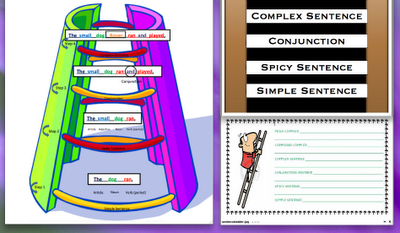Whole Brain Teaching Wednesday! The Genius Ladder

I am currently laying in bed seemingly dying from bronchitis but it is also my fifth Whole Brain Teaching Wednesday post! I hope that this focus on a specific WBT strategy is helpful to those of you who are wishing to learn more about how a certain strategy may work and what my personal experience with it has been. Last week I highlighted “The Scoreboard”, this week I would like to introduce you to the WBT strategy of “The Genius Ladder”. (I realize that my introduction of these strategies are not in any specific order).
So far, my WBT-W posts have been summarizing classroom management strategies but this week I would like to add something new! Last night my fiance and I were working on a reflection paper for his ELA Methods course and decided to include some information on the WBT teaching strategy of “The Genius Ladder”. Although English is not one of my teachables, I really enjoyed learning more about this strategy so I’ve decided to include it as this week’s WBT focus.
One of the things I had difficulty with when I started post-secondary level classes was my formal writing, specifically all those essays and reviews for my history major! While I knew what I wanted to say in my writing, I had difficulty with essay organization, topic sentences and effective arguments. After some trial and error I began to have a better grasp on the mechanics of formal writing but I feel that I would have benefited if I had had more opportunities to learn these skills in high school. “The Genius Ladder” is a visual teaching strategy that provides students, of any age, with an opportunity to practice sentence structure, parts of speech, complex sentences, and paragraph organization. The following describes “The Genius Ladder” teaching strategy as stated by Chris Biffle in the WBT Model Classroom E-Book available for download here.
 |
| Genius Ladder made by Allison, WBT Intern for 2011/2012 |
The Genius Ladder is posted on the front board and changes daily. Students work from the bottom of the ladder, simpler sentences, to the top of the ladder, a paragraph. The rungs of the Ladder are:
At the top rung of the Genius Ladder, the Genius Paragraph, several sentences called Adders are added to the Extender Complexor. Adders are defined as any sentence that adds information to a previous sentence. Thus, Adders make up the bulk of student writing. As you can see, as the student moves up the Genius Ladder, the sentences advance, quite naturally, from simple to complex. Fairly sophisticated topic sentences can easily be created.
As some of you know, my first student teaching placement was in a Grade 10-12 Social Studies classroom so I unfortunately don’t have any personal experience to share with you regarding this teaching strategy. In March when I begin my second student teaching placement I will be in a Grade 5 class where I may have an opportunity to try out this strategy. If so, I will make sure to update and let you know how it worked out! Click on the link below to download the E-Book where you can find the full “Genius Ladder” description on pages 8-11. There is a great section on how to specifically utilize it in the classroom.
Check out the Whole Brain Teaching E-Book Download to see Chris Biffle’s instructions in context or check out Chris Biffle’s YouTube channel to see this strategy in action.
Thanks so much! This was a very helpful article.